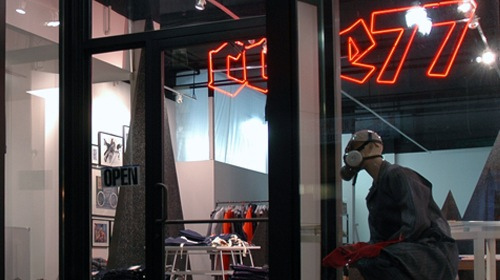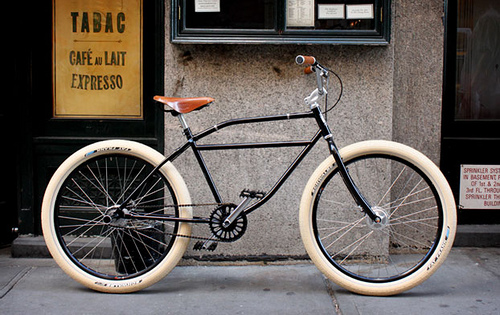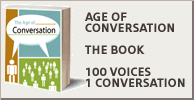
Blogs have their limits and there are tight limitations on your ability to get your feelings and philosophy out there, if you are limited to 11 or 12 timely news focused posts per day.
The decision to open a store would make a logical sense from a business perspective, it's easy to do especially online and it seems like an obvious extension for people who write about cool design to sell the objects that these cool designers make.
However, given the lack of opportunity to influence on the blog and the rise of making as a phenomenon in the US, they wanted to do something different and create a store dedicated to the act of making.

As they explain..
"Over the past 15 years we've watched and cheered and done our part to help push design to the prominence it enjoyed in that earlier era. With the zealotry of converts we spread the word. And then with similar visceral emotion we watched as culture and commerce and design entwined...
The annotation of the design process and its spread to the board-room
and the business-book aisle for the purpose of improving market
capitalization. The reduction and division of design's complex and
mysterious core into silos of formulaic practice: user-centered design,
sustainable design, "design thinking". Media exaltation of the
designer as author - defining creative work as genius self-expression
and cordoning off the creative act from the public with a velvet rope.
The heart of design - of making things - was simultaneously diminished and aggrandized; made explicit for the business community, moved to the distance for the average person. It is this heart that we wish to gently massage back to a healthy beat. DIY and crafting have done their part to spread the "making meme" out in the general public, and the time is right to see it restored to the practice of design."
This makes sense for many reasons; there's a need to connect back to the fundamentals of design. It seems with CAD systems and Chinese factories, design has become a button-pushing game; far removed from the physicality of objects. This foundational idea to get "making" back on the designer's agenda is a good thing.
But is there more at stake?
Clearly, the value of making and tinkering has been going through something of a resurgence in various parts of culture. This tends to be personal and home-based and we've seen it rise to a large scalable business in the craft world with Etsy, but it's still small. Maybe this is what manufacturing in the US has become; a craft project, but if anyone has serious designs about keeping what manufacturing exists in this country and bringing some scalable manufacture back; it's going to take some kind of infrastructure, skilled workers and a public who's willing to pay a premium for US made. This is going to take more than a store and something like a $200 million global brand Made-in-the USA effort.
Posted by Ed Cotton
Creatives then have the huge task of narrowing their thinking down to something meaningful and strategic. You see this a lot with students with their challenges and projects, even at places that supposedly teach planning; the two disciplines sit at opposite end of the table and the strategists often have to force their way into the conversation.
Quite simply, a brief is not mandated and neither and the the creative work is rarely accountable.
Refreshingly, Steve Portigal, the king of design strategy, has made a move in the right direction.
Teaming up with Core 77 and 826 Valencia he's contributed a ton of research thinking to the challenge of imagining The Future of Reading. It's not simply a data dump, they've translated their findings into something close to a real brief with lots of juicy information to feast on.
BRIEF:
What will reading look in the future? Will we be using printed books, rectangular electronic devices, embedded technologies?This competition challenges designers to envision a rich future digital reading experience, based on a defined set of design research.
Recently, Portigal Consulting undertook an exploratory research project on reading, books, and digital reading devices, entitled Reading Ahead. Here's what they found:
- Books are more than just pages with words and pictures; they are imbued with personal history, future aspirations, and signifiers of identity
- The unabridged reading experience includes crucial events that take place before and after the elemental moments of eyes-looking-at-words
- Digital reading privileges access to content while neglecting other essential aspects of this complete reading experience
- There are opportunities to enhance digital reading by replicating, referencing, and replacing social (and other) aspects of traditional book reading
And here's what they suggest for your design explorations:
- Include the sensual
- Support the social side of reading
- Consider the varied modes and rituals of reading
- Develop an ecosystem
Posted by Ed Cotton
Instead of doing the obvious and launching a publishing arm and producing books, Core 77 used its connections and understanding of the zeitgeist to produce a beautiful hand-crafted bicycle.

The bike can be seen up close and personal this Saturday afternoon (July 11th@3pm) in Apple's Soho, NYC store.
Posted by Ed Cotton
The cynics and skeptics are coming out of the woodwork and are ready to bash anyone who isn't thinking this thing through properly and merely trying to "Greenwash".
This isn't just coming from the expected sources.
This is from Core 77, yesterday.
"At first glance, Feel More Human seems to have everything for the conscious consumer with a modern design sense. The online store has an eco-friendly home and lifestyle section, with tables from Scrapile, sofas from Dutch designer Björn Mulder, and even a Buddha cat perch made from renewable bamboo plywood. There is a content section featuring interviews with inspiring eco-entrepreneurs, a classifieds area where visitors can buy or sell their pre-owned modern design goods, and the whole operation is powered by 100% wind energy.
Yet scratch beneath the surface and you'll find that even those with the greenest of intentions have a hard time making the most environmentally sound choices. Mixed in with all of the bamboo, reclaimed wood, and toxin free fabrics are not-so eco foams, lacquers, plywoods, and plastics, like the NotNeutral Melamine Snack Set for kids. How did a kid's dinnerware with melamine, a resin manufactured by mixing urea with formaldehyde, get onto a site devoted to sustainable lifestyles? Or chrome, a material known for emitting toxic elements into the air, land, and sea, which can be found in several items in the store, such as the Tokyo Shelving Unit or the Valis Chair. Jill Stalowicz, the company's founder, says, "smart design goes beyond aesthetics now, people are questioning how products are constructed."
The lesson here is that the practice of green is harder than the promise, and that Feel More Human might want to take a look at how all of its products are actually made."
Posted by Ed Cotton
